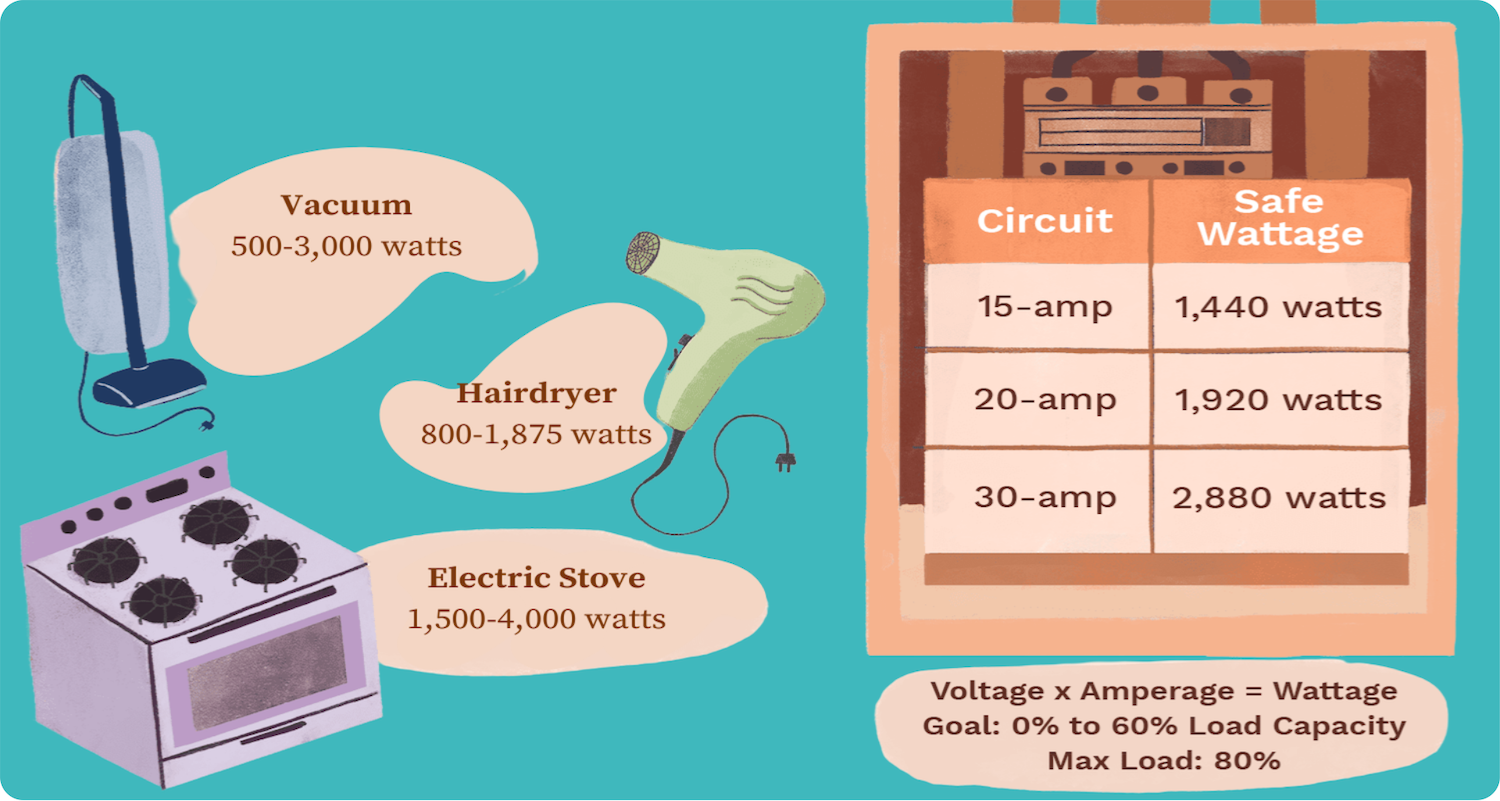Electrical Load Calculation: 3 Steps To Get It Right
Whether you’re moving into a new home or you’re planning a big remodeling project, an electrical load calculation is definitely an important step. It helps you understand the electrical capacity of your house and also choose the appropriate electrical service. If you live in an older house, chances are your existing service is really undersized considering the modern needs of a household.
To understand how to calculate the electrical load, first you need to know what it refers to. The term electrical load capacity is defined as the total amount of power that your main source of electricity provides for your home. This is used by all of your home’s circuits, as well as all outlets, appliances or lights connected to these circuits.
Another important thing to know is the measurement. The total capacity of your home’s electrical system is measured in amperage or Amps. The newer, modern homes have 200-amp services, with top end homes having 400-amp electrical service installed. In order to determine what you need, there are several factors to consider, but you also need to understand some of the basics involved. You’ll also need to do a little bit of math to compare the total capacity against the load that will be placed on it.
1. Understand Watts, Volts & Amps
As mentioned above, the electrical load calculation means adding up the amperage of all your fixtures and appliances. For safety reasons, it is always ideal to build in a margin of safety. Usually, it’s best if the load does not exceed 80% of your electrical service capacity. However, in order to mathematically do the calculation, you’ll need to understand the watts, volts and amps, as well as the relationship between them:
- Amps = watts / volts
- Volts x amps = watts
These are two simplified formulas that can help you calculate not only the capacity of your entire electrical service, but also those of individual circuits. For example, if you have a 100-amp service with a 240 volts circuit, then your total capacity is 24,000 watts.
Since the recommendation is not to exceed 80% of the total capacity, that puts you at 19,200 watts. This means that all your appliances, devices, lights, etc should not exceed 19,200 watts at any given time in order to avoid an overload.
All light bulbs and appliances come with wattage ratings, so it shouldn’t be hard to calculate the total wattage amount.
2. Do The Calculation
As said above, once you know the capacity of your individual circuits or your home’s full service, you can then proceed to measure it against the load. Add up the wattage ratings of all the appliances and fixtures that will be using power at the same time.
You don’t need to add all the lightbulbs, all the plug-in appliances, and all the hard-wired appliances,because you’ll rarely run everything at the same time. You’ll definitely not run the AC and the furnace at the same time. Similarly, it’s unlikely to run the vacuum cleaner and the kitchen aid at once. There are alternative methods to determine the appropriate size for your electrical service. Here is one:
- Start by adding the wattage of all lighting branch circuits.
- Add in the wattage rating of all plug-in outlets.
- Add in the wattage of all permanent appliances, such as washer/dryer, electric range, or water heaters.
- Subtract 10,000 & multiply this number by .40
- Add 10,000.
- Add the wattage of your AC or heating appliances (furnace + space heaters), whichever is greater – Don’t add both!
- Divide by 240.
The result will be the suggested amperage needed to power your home adequately. If this type of electrical load calculation is too complicated, many electricians have a simple rule-of-thumb, which says that a 100-amp service is usually sufficient for a small or moderate-sized home with standard branch circuits and one or two permanent electric appliances, such as water heater or range. A home under 2,500 square feet should be fine if the heating runs on gas.
You’ll need a 200-amp service if your heating and cooling is electric or your house is closer to 3,000 square feet. For larger homes, with all electric appliances and heating/cooling systems, a 300- or 400-amp service is recommended.
3. Think Ahead
While these calculations will help you get an idea of what your electrical service size should be, it’s best if you take the numbers with a grain of salt and always overestimate. Think ahead of how your household might expand or any addition you might plan later on.
You should also consider your plans for the garage. If you plan on purchasing an electric car, or even two, then that’s something that will certainly add to the load. If you have a hobby like woodworking or pottery, that can cout as well. Investing in an oversized service will allow you to easily run a sub-panel to your garage for the EV charger, or a workshop of any kind.
A Simple Electrical Upgrade Can Upgrade Your Quality of Life
The right electrical upgrade can dramatically improve the value and appearance of any home or business. You’ll be amazed at what a difference the right electrical upgrade can make for your home or business. Make sure that when you select an electrical company to do the enhancement of your home and you have decided to take your enhancement to the level where you require an electrical upgrade that the technician at the company has a good working knowledge and the experience to properly guide you in this area.
When you decide to upgrade, our well-trained and certified electricians have all the experience and training needed to complete your electrical panel upgrade project from start to finish, with a minimum of fuss or disturbance. Please contact us right away at 310-800-2401



